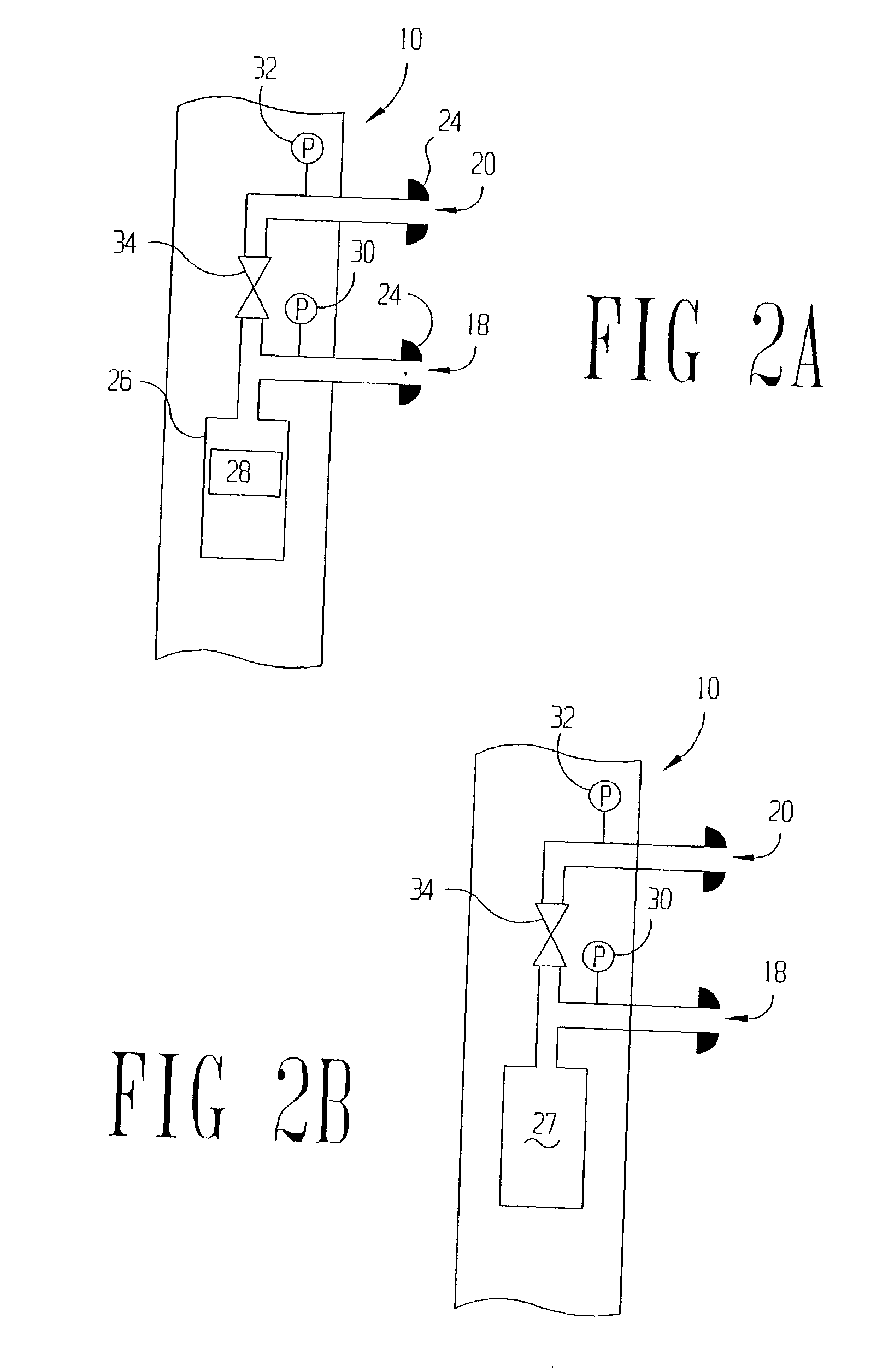Multi-probe pressure transient analysis for determination of horizontal permeability, anisotropy and skin in an earth formation
a technology of anisotropy and skin, which is applied in the direction of earth drilling, well accessories, boreholes/wells, etc., can solve the problems of insufficient ascertaining the horizontal and vertical components of permeability, affecting the ability of downhole formations to produce hydrocarbons, and not being determined or compensated by boreholes
- Summary
- Abstract
- Description
- Claims
- Application Information
AI Technical Summary
Benefits of technology
Problems solved by technology
Method used
Image
Examples
Embodiment Construction
[0014] The problems noted above are solved in large part by a formation tester comprising two probes. Collecting data regarding formation pressure starts by fluidly coupling the probes to the formation walls. At least one of the probes creates a pressure gradient which is sensed by the related probe. The pressure data obtained is then applied to a series of analytic model which take into account the skin of the formation, the dip angle encountered and the storage effects downhole.
[0015] Using numerical regression analysis techniques, the preferred embodiments manipulate the parameters of the analytic model until the pressure response predicted by the model matches the actual pressure response. Once this is complete, the formation parameters such as permeability and skin are available in the solved model. In embodiments where one probe is used, the analytic model calculates spherical permeability taking into account one or both of the skin and dip angle. Where two probes are used, th...
PUM
 Login to View More
Login to View More Abstract
Description
Claims
Application Information
 Login to View More
Login to View More - R&D
- Intellectual Property
- Life Sciences
- Materials
- Tech Scout
- Unparalleled Data Quality
- Higher Quality Content
- 60% Fewer Hallucinations
Browse by: Latest US Patents, China's latest patents, Technical Efficacy Thesaurus, Application Domain, Technology Topic, Popular Technical Reports.
© 2025 PatSnap. All rights reserved.Legal|Privacy policy|Modern Slavery Act Transparency Statement|Sitemap|About US| Contact US: help@patsnap.com



